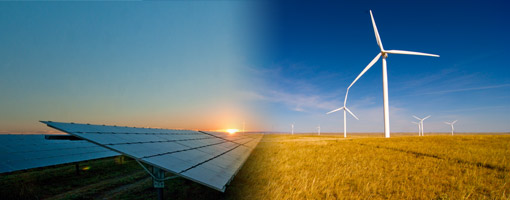According to the latest Federal Energy Regulatory Commission’s (FERC) monthly “Energy Infrastructure Update,” renewable energy now accounts for the largest share of new U.S. electrical generation put into service thus far in 2016.
The FERC report, containing data through October 31, 2016, says newly installed capacity from renewable sources combined – including biomass, geothermal, hydropower, solar, and wind – totals 8,267 MW for the first ten months of the year, or 47.5 percent of the total (17,418 MW).
By comparison, fossil fuels (i.e., coal, natural gas, oil) account for 7,866 MW, or 45.2 percent, with the bulk of that — 7,788 MW — coming from natural gas. And with the start-up of the Tennessee Valley Authority’s new Watts Bar-2 reactor, nuclear power has added 1,270 MW, or 7.3 percent, the SUN DAY campaign said quoting the FERC report.
Notably, while the 1,270-MW Watts Bar-2 is the nation’s first new nuclear power reactor since 1996, new capacity from solar, wind, biomass, and hydropower in the single month of October alone (1,088 MW) nearly matched what it took the nuclear industry over 20 years to bring online.
Moreover, year-to-date, new wind generating capacity totals 2,972 MW — more than double that of Watts Bar-2 while new solar generating capacity (4,960 MW) is nearly four times that of Watts Bar-2. There are also 257-MW of new hydropower capacity and 78-MW of new biomass capacity but no new geothermal steam capacity thus far in 2016.
Five years ago, renewable sources cumulatively accounted for 14.12 percent of total available installed generating capacity; now they provide 18.58 percent: hydropower – 8.52 percent, wind- 6.54 percent, solar – 1.78 percent, biomass – 1.41 percent, and geothermal – 0.33 percent. Each of the non-hydro renewables has grown during the past half-decade with solar’s share nearly twelve times greater today than in 2011.
By comparison, oil is now only 3.82 percent, nuclear power is 9.18 percent, and coal is 24.87 percent — shares of the total that are all lower than five years ago (4.62 percent, 9.45 percent, and 29.97 percent respectively). Only natural gas has experienced modest growth and that is from 41.67 percent in 2011 to 43.39 percent today.
“FERC’s latest data again make clear that nuclear power — as well as oil and coal — have lost the race with renewable energy sources,” said Ken Bossong, executive director of the SUN DAY Campaign. “Natural gas may still be in the running but even it is slipping under the combined weight of solar, wind, and other renewables.”

